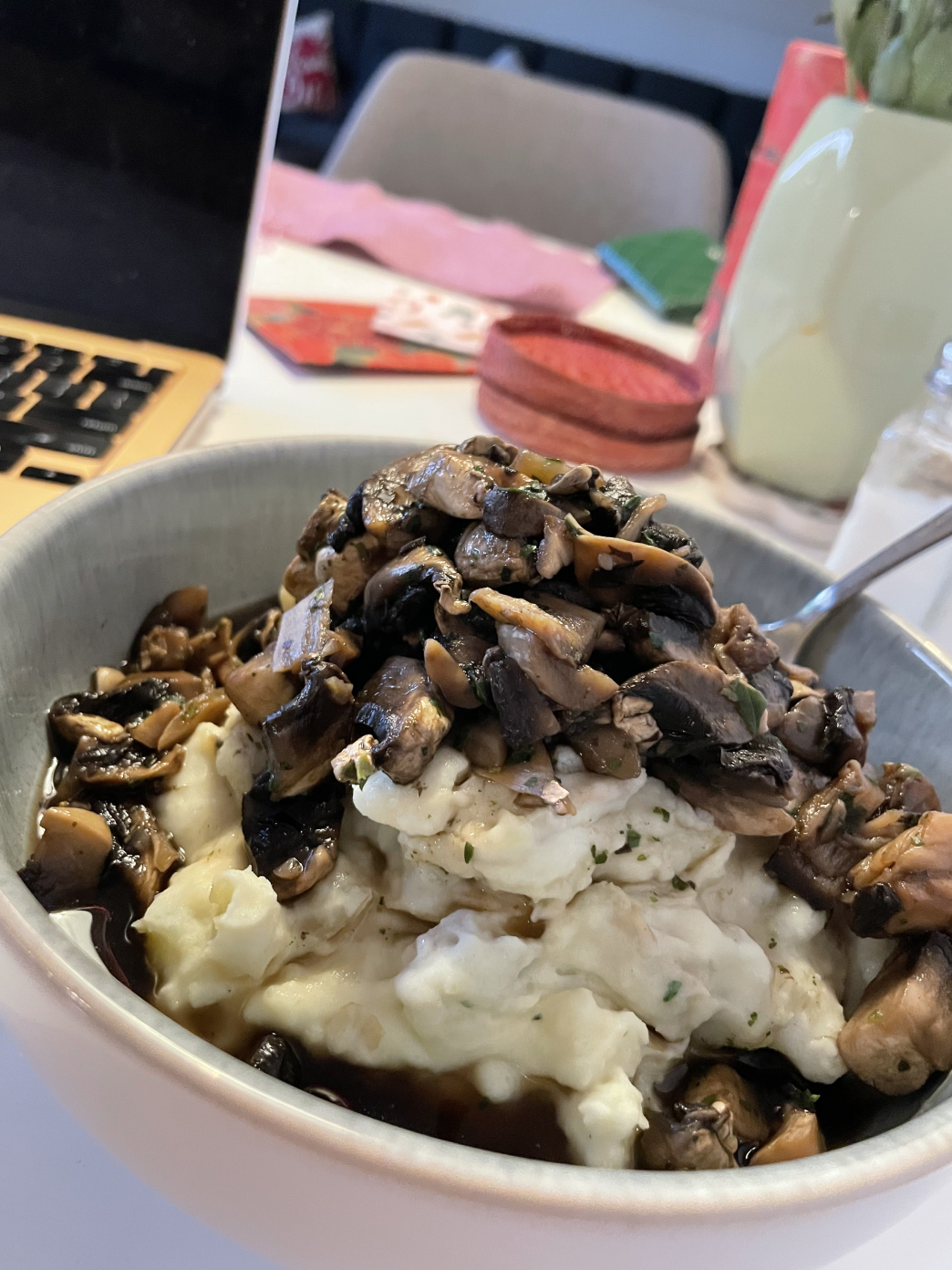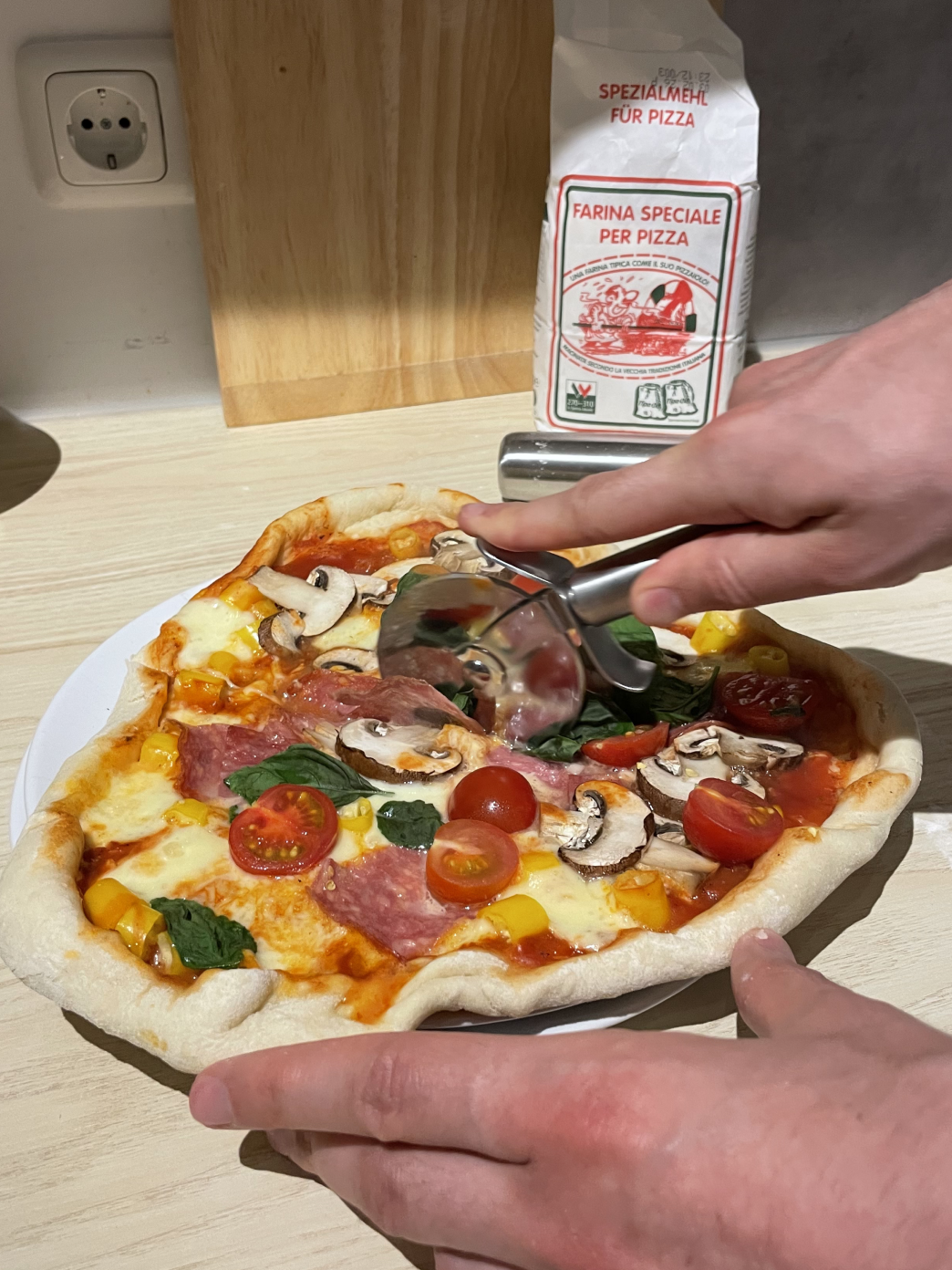Calorie Budget
Food • Data • Fitness
Jun 03
How to eat anything you want.
And get away with it.
It’s time to overshare again. Let’s
talk about food and data - as
always.
If you’ve read any of my recent blog
posts, you might know I got really
fit. In about two months, I
lost around 6 kilos and
dropped my body fat
percentage by 4 points.
The road here was not easy, and I was afraid of losing my progress once the program ended. I had worked really hard - early morning workouts and tracking all my meals daily. I even wrote two blog posts about it, find them here and here. And even though I had to stop the challenge before it finished (read about that part here), I was determined to stay fit.
Well, it’s been 1.5 months since I stopped the super strict diet and... my weight hasn’t changed at all. I’m still at 55kg.
What was my secret?
I created my
own calorie budget.
Let me tell you all
about it.

More muscle mass means higher BMR
STEP 1: base spending
The first thing to do is figure out how many calories you burn just by existing. Humans spend energy on basic functions like breathing, circulation, and nutrient processing. This is called your basal metabolic rate, or BMR. It's basically the number of calories your body needs to do these primary functions and stay at the same weight.
Since we’re thinking of calories as how much we can eat, we can treat this like our base income - our initial budget.
How do you calculate yours?
Factors like
activity level (sedentary, light, moderate,
or high), age, height, weight,
and sex assigned at birth influence your
BMR. If you’re bigger or have more muscle
mass, you’ll need more calories.
You can try calculating it yourself with a formula, but there are tools online that will give you a general estimate. I’ve used this calculator in the past.
Not surprisingly, I don’t need a lot of calories. My BMR is around 1300 calories, and if I don’t move at all in a day - beyond getting food and moving from bed to couch and back again - I won’t make it past 1500 calories.
If you think about it in budget terms, my
income is pretty meager.
So I
need alternative sources of income.
How? By moving more and thus adding
active calories.
Here’s where I enlisted the help of a fitness tracker. There are quite a few models available on the market and you can find pretty affordable ones. If you’re just walking or doing simple stuff, Apple Health or Google Fit are already on your phone and can be a good fallback.
With the tracker, every movement counts. I can measure all my activities and see how much I “spent” by being active. I even did a blog comparing workouts (find it here) to find the one that burned the most calories. Turns out, cardio is your best friend. I’m very partial to dancing and walking - they always help me reach my calorie goals for the day.

Low calorie doesn’t mean low flavor :)
STEP 2: TRACK SPENDING
This one’s pretty straightforward: figure out how many calories you’re eating.
I use the app connected to my fitness tracker to log what I’m eating. It can be a bit annoying at first, but once you’re in the habit, it becomes second nature.
This way I can see if I’m above, below, or at my maintenance level, how much budget I have left for the day, and according to that, plan my next meal.
A few times a week, I aim to be at least a few hundred calories under. Why? I like going out to restaurants and relaxing on the weekend. It’s hard to find the exact number of calories in a dish cooked by someone else, so it’s better to overestimate to keep yourself on track.
This also motivates me to increase my activity level. If it’s a friend’s birthday or we’re celebrating something big tonight, I’m going to try to walk everywhere all day to make sure I can leave the counting for another night.
On days where I’m aiming to stay
below maintenance, I choose very healthy
meals.
I avoid cooking with
oils and try to limit my carb intake
so my calories don’t go up too fast. I’ll have
salads and curries a few times per
week and snack frequently on fruits and
veggies.
The trick is to stay at a balance:
most meals eating healthy, and
then enjoying treats when they matter.

Making room for an Aperol in the sun
Step 3: Playing With Your Budget
Once you’ve got the basics down, you can start playing.
Let me give you an example: earlier this week I had
a very stressful day and wanted to
enjoy a pizza with a little Aperol.
I started with a
late, light breakfast
and walked to the restaurant, where I enjoyed
my lovely lunch. Then I walked back home -
with a gelato in hand. For dinner, I already
knew it had to be a salad. Even so, I was still
above my calorie limit. So it was time for a
night walk. After a pleasant nighttime stroll
and a lovely chat, I was back in budget with
40 calories to spare.
This is a strategy I’ve been using: gentle cardio. Nothing too intense, since I already lift weights at the gym. Just moving more - and enjoying it.
This works great for holidays. You’re already ready to indulge and rest but you also have a lot of free time and can move around more. A true holiday for me is just walking everywhere in a new city with a pastry in hand.
If you need something else to bring
balance - because you can’t walk outside, maybe it’s
cold or raining, or maybe you just don’t feel like
going out - you can always put on YouTube and do
Just Dance videos or a
nighttime fitness routine and burn the
calories you need to stay at maintenance level.
No
need to overdo it. All movement is good.

Yes to data, yes to pizza
If I want you to leave with one takeaway from this post, it’s this: moving more does wonders. You don’t need to restrict yourself, you just need to find balance.
Data is going to be your best friend. You have to know how much you need and how much you’re spending. Yes, it can be annoying, but for me, it’s more annoying not to enjoy my pistachio croissant. I’m a fiend for a good flat white, and if my meager BMR isn’t going to help, I’ll figure it out myself.
If your work doesn’t let you move too much or enjoy flexible hours, try sneaking in more movement throughout the day. See if you can switch your commute. Even small things start adding up: taking the stairs, going for a walk during lunch, or convincing someone to have a walking meeting.
Big disclaimer: I’m not a
nutritionist. I’m just a fitness and
data enthusiast.
My tips here are
just general advice that’s worked for
me.
If you’re looking to lose or
gain weight in a healthy way, I
recommend talking to your doctor to
find the best diet for your
needs. Not everyone is made the same, and we
all have different needs. For example, the
protein intake I need might be very
different from yours, even if we
train similarly.
With that being said: Always say yes to data and try to say yes to pizza, sometimes.
Sources:
-
“What Basal Metabolic Rate (BMR) Measures”, Verywell Health, https://www.verywellhealth.com/basal-metabolic-rate-8698651
-
“BMR Calculator” Calculator.net https://www.calculator.net/bmr-calculator.html
That’s Enough About Me!
What do you think? What should I focus on next?
What’s the first thing you are going to spend your calorie budget on? Is it time for a pastry walk or a gelato stroll? I hope you find balance in a healthy and fun way.
Let me know—shoot me an email! 😊
📩
sifuentesanita@gmail.com